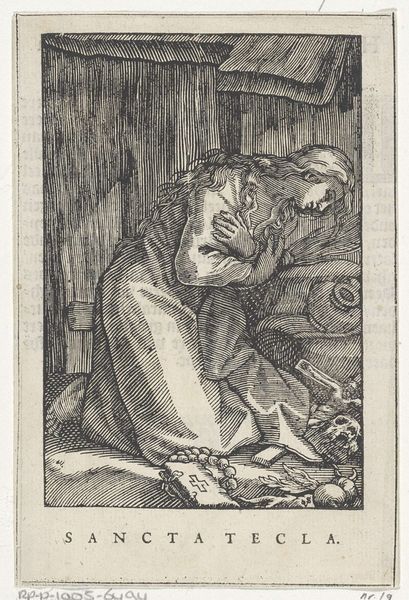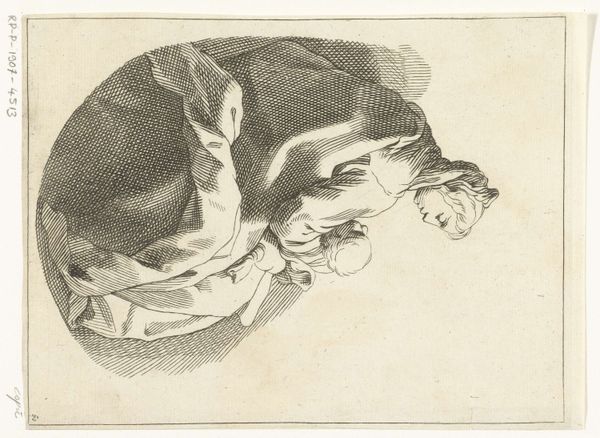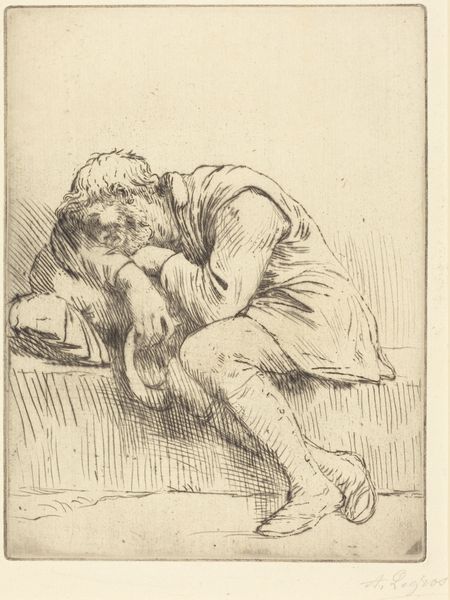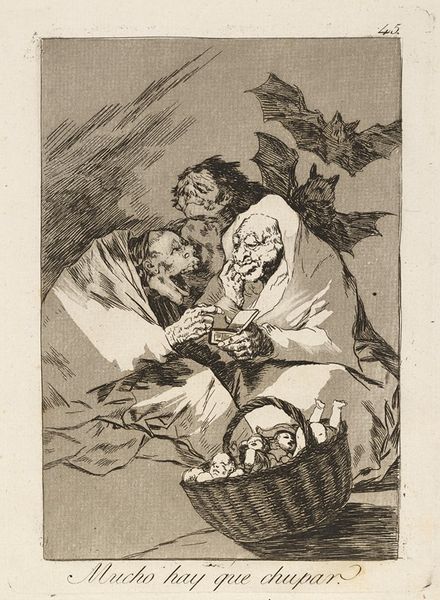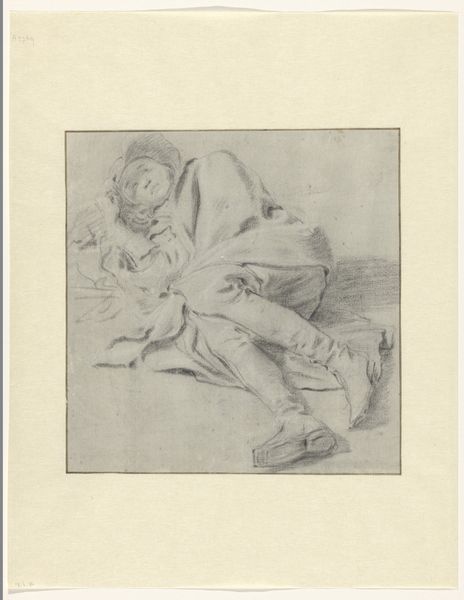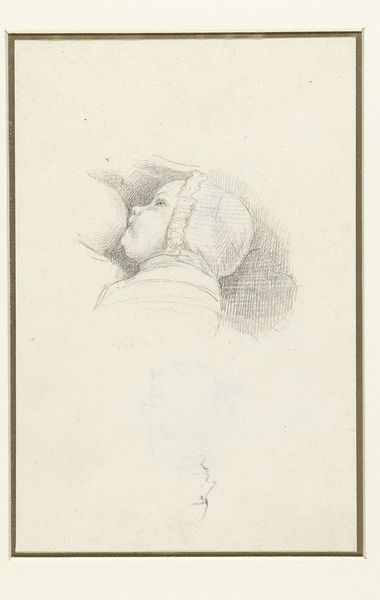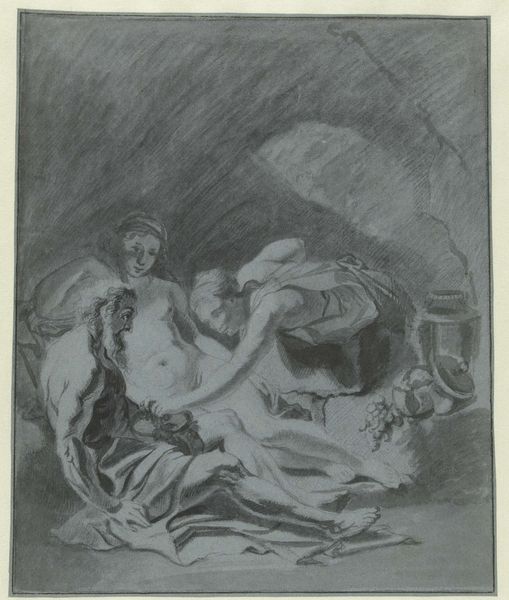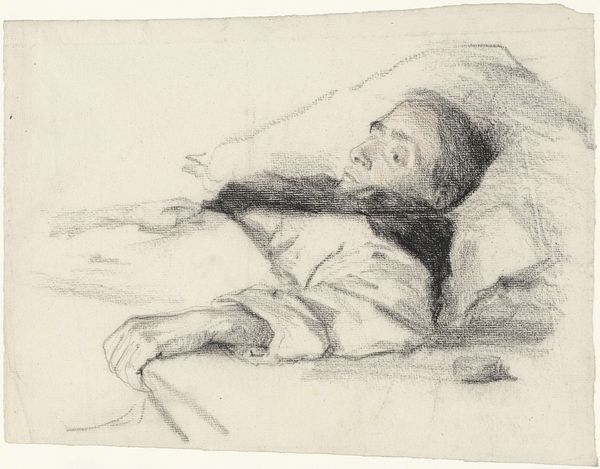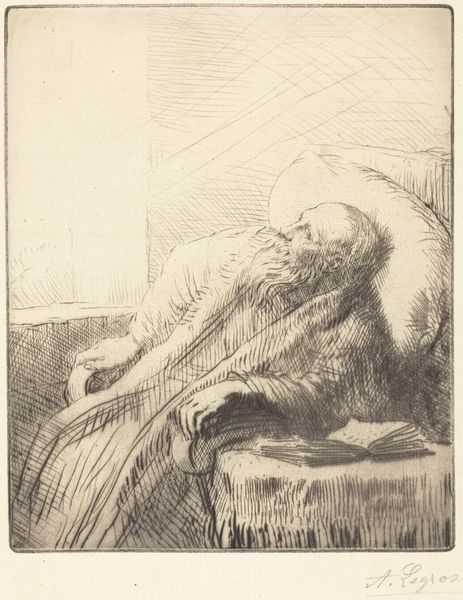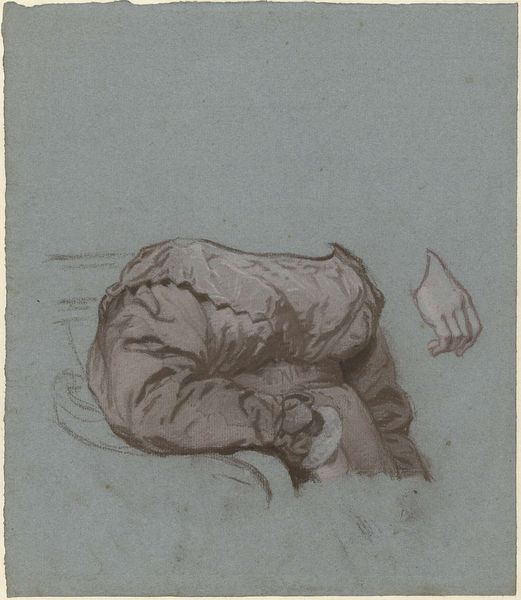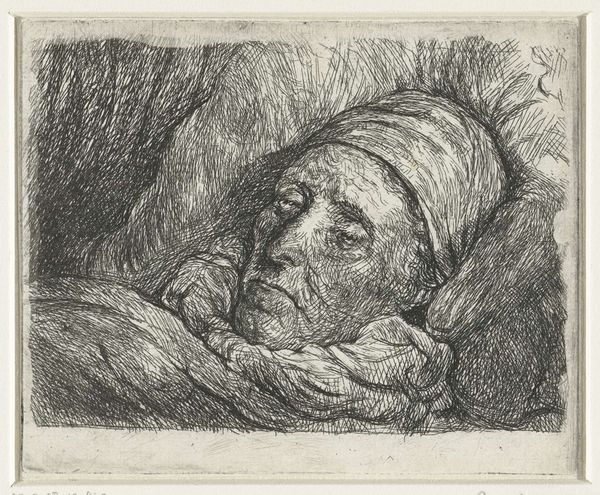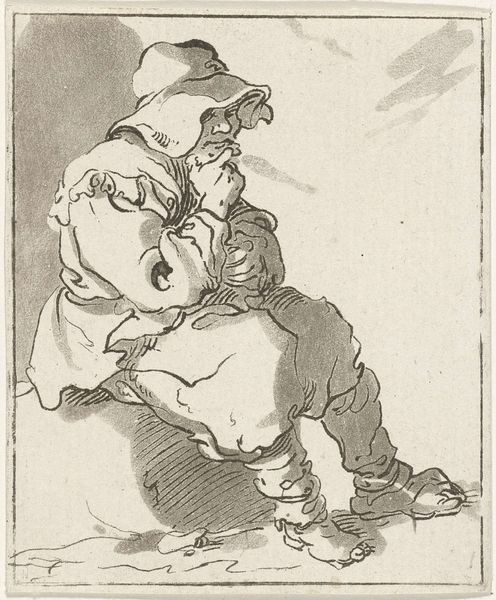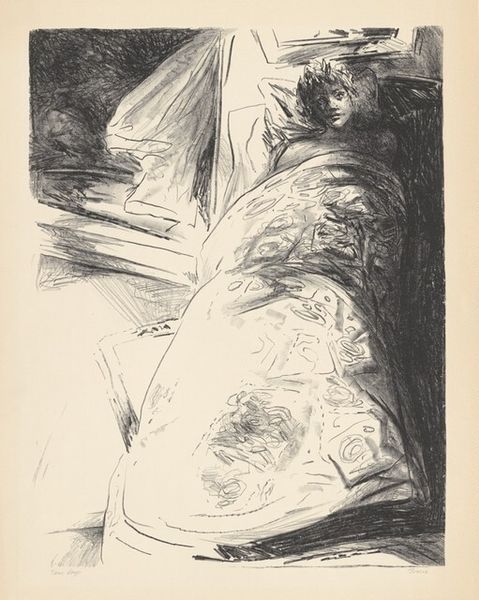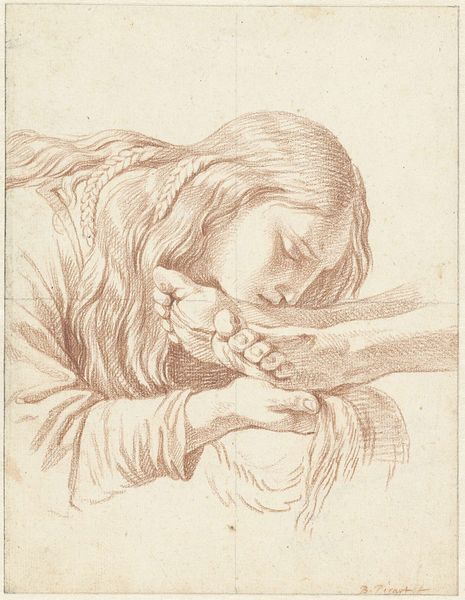
Dimensions: height 158 mm, width 120 mm
Copyright: Rijks Museum: Open Domain
Curator: Oh, my. Right away, there’s a lot happening in this little engraving. The kind of face only a mother could love! Editor: Precisely, let’s consider what we’re looking at. This print, housed here at the Rijksmuseum, is entitled "Huilend kind met nap," or "Crying Child with Bowl". It’s from around 1768-1796, and it was created by Pieter de Mare. I feel the caricature is crucial to understanding its time, wouldn't you agree? Curator: Well, ‘crucial’ might be a bit strong. The way those etched lines twist and writhe to render this unfortunate babe, that’s what catches my eye! I mean, he’s proper livid. Is the porridge cold? Too hot? Not sweet enough? My heart bleeds! Or... perhaps not. Is this supposed to be funny? Editor: I think that’s precisely the point. It critiques sentimental notions of childhood. Consider the Enlightenment's emphasis on reason versus emotion. Caricatures often served as vehicles to subvert accepted norms. Is this not a commentary on idealized portrayals? Curator: You’re suggesting this isn't just about a toddler’s temper tantrum? That’s one theory, though this looks like one mega meltdown. This engraving may signal a shifting societal gaze, like the Enlightenment critique that was very harsh indeed. And that bowl, almost bigger than the child’s head! Such irony. Editor: Agreed! The bowl itself is fascinating. It seems to dwarf the child, and, perhaps is illustrative of the period’s concerns about the role of children within a family’s financial responsibilities. How different this depiction is from those paintings with cherubic babies being coddled in silk ribbons! Curator: Oh, indeed. It seems Mr. de Mare here chose to depict... real life? And how raw the expression is. The distortion feels incredibly modern, doesn't it? Makes one question, were babies cuter back then? Editor: A poignant, yet necessary reminder of social realities, wouldn't you say? Curator: Quite. And now, suddenly, I have the urge to stir up some outrage of my own. What could possibly go wrong? Editor: Absolutely, the work speaks to the continued tensions of raising and providing for family needs—a commentary across centuries. Thank you!
Comments
No comments
Be the first to comment and join the conversation on the ultimate creative platform.
